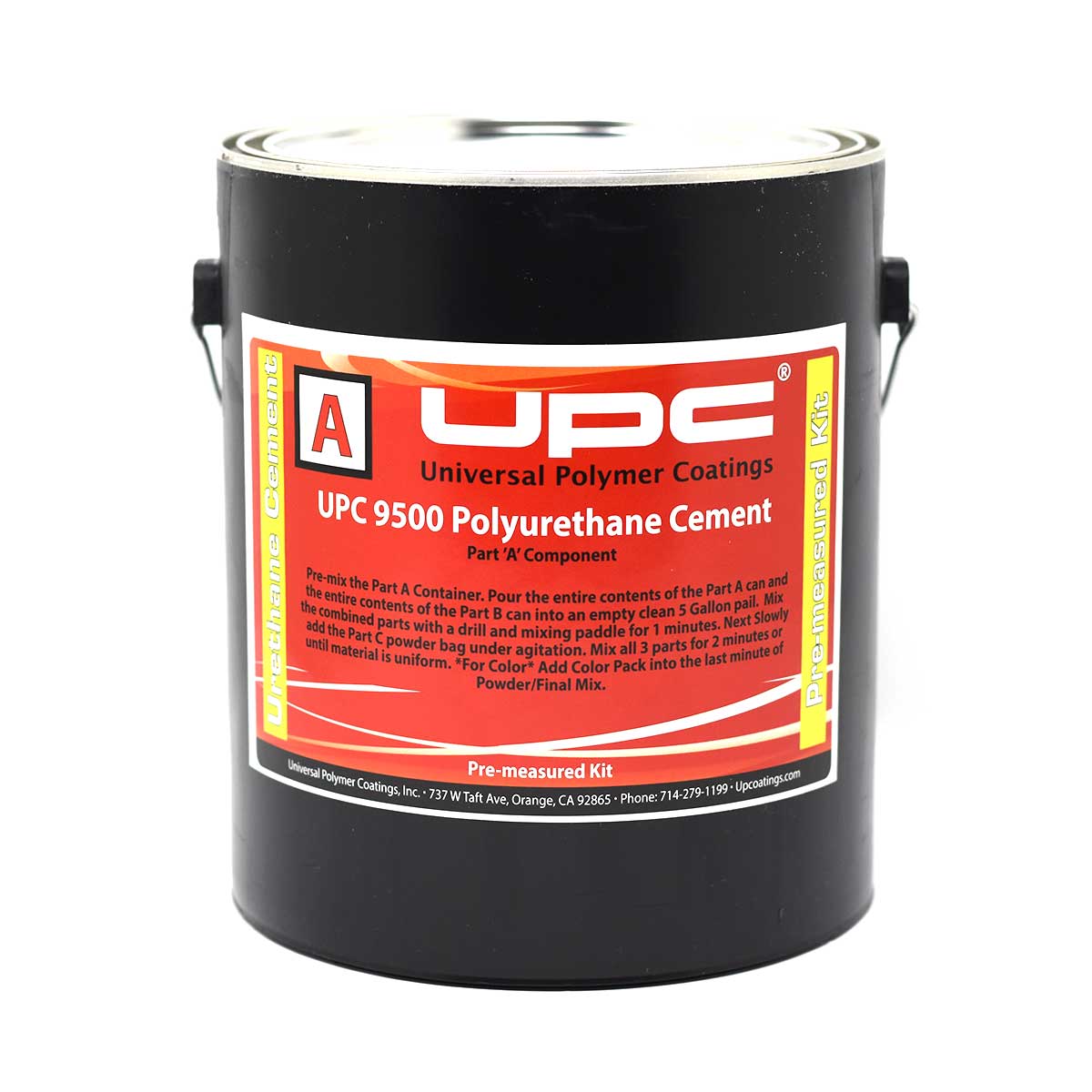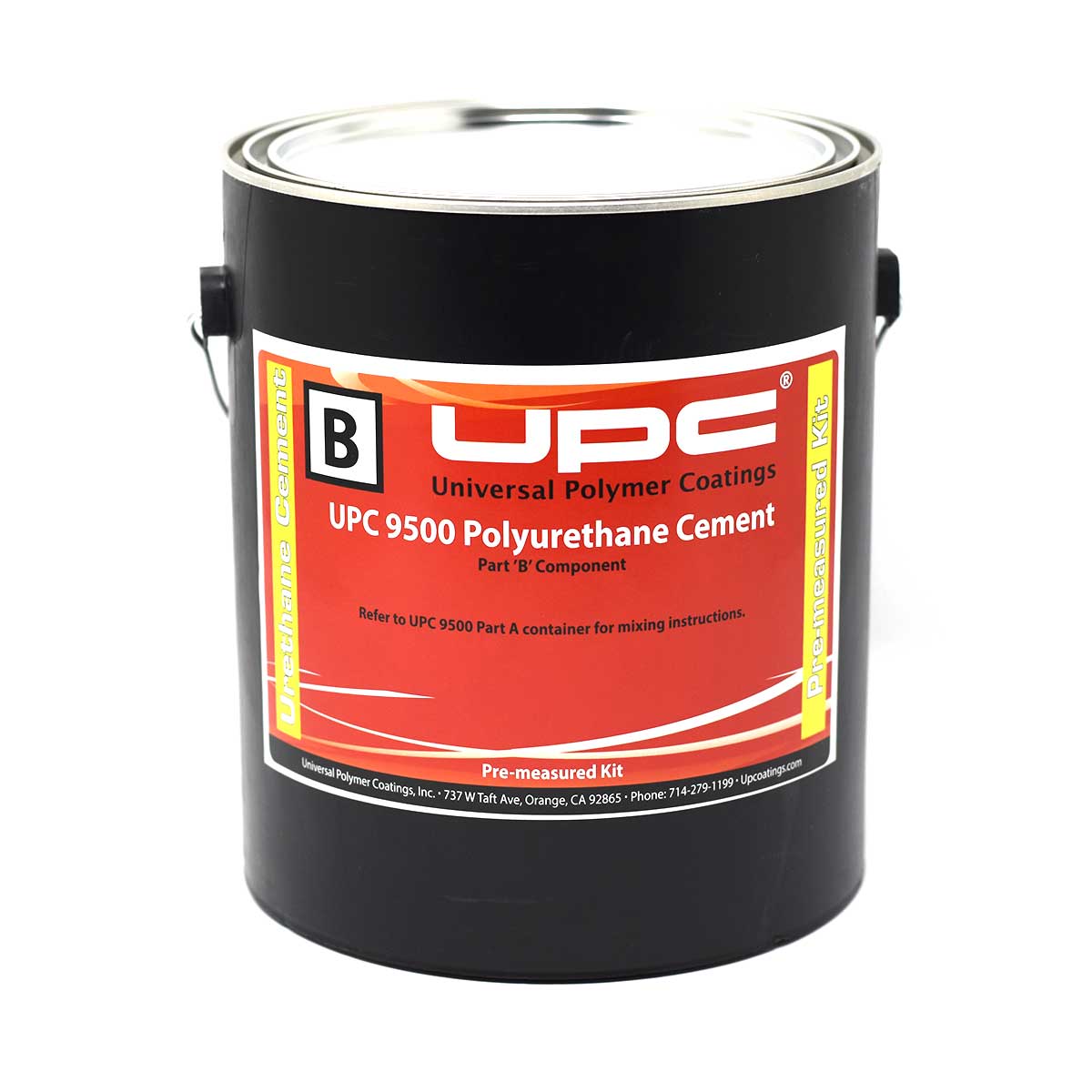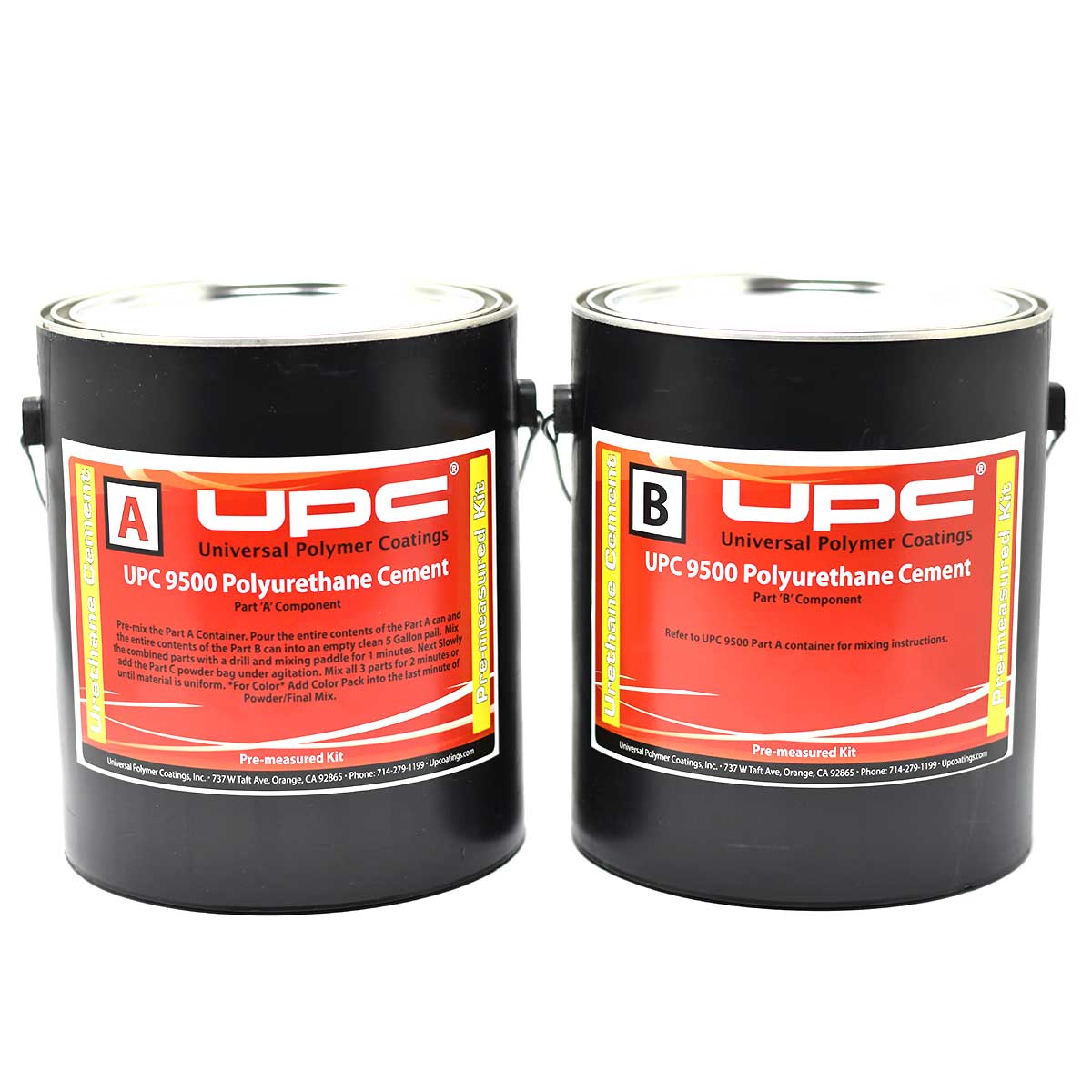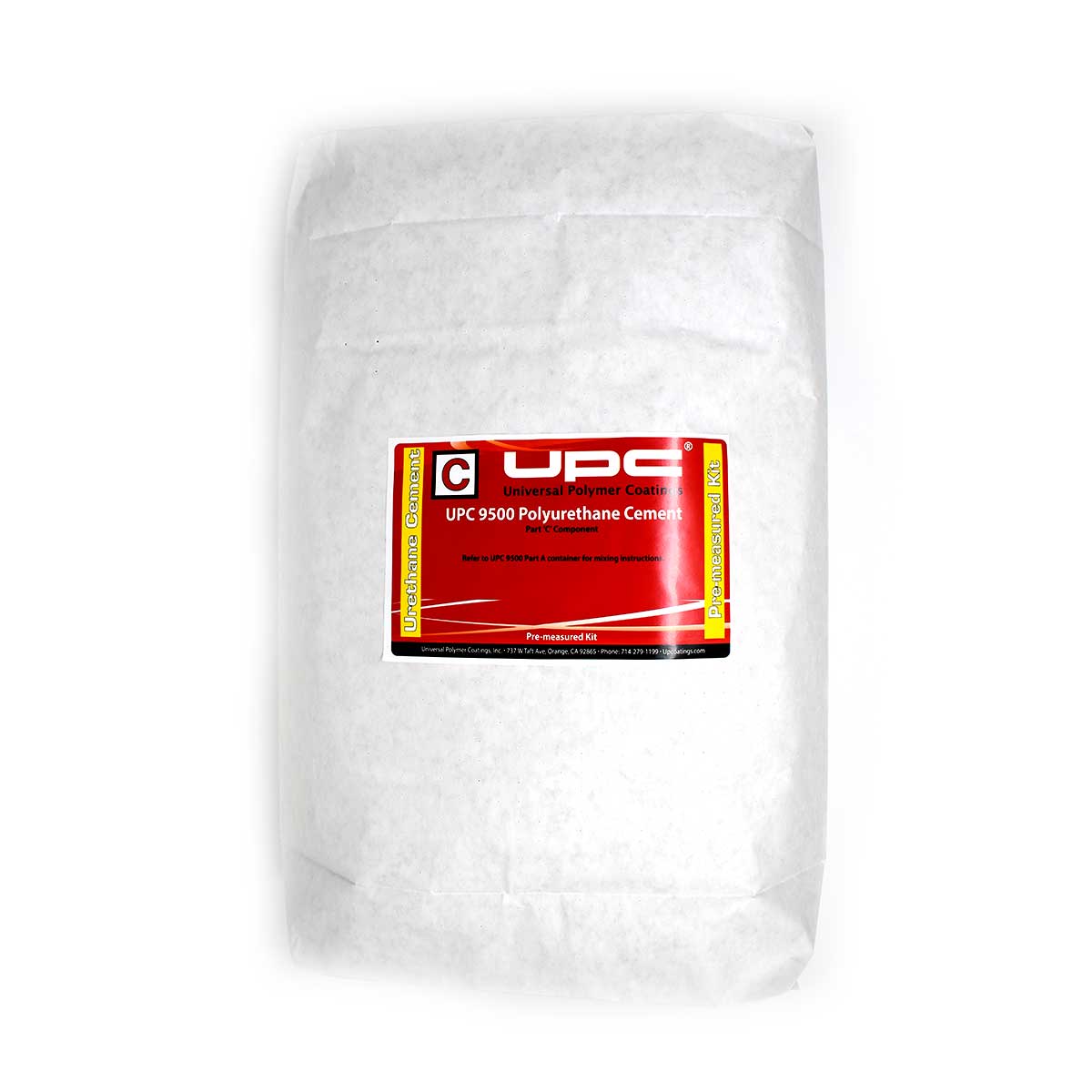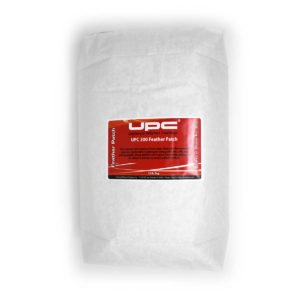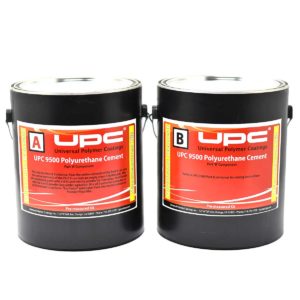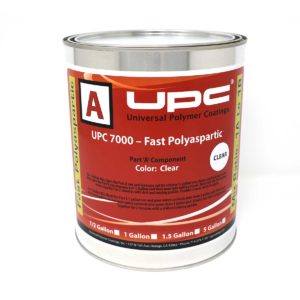UPC 9500 Polyurethane Cement
UPC 9500 is a three-component polyurethane concrete floor coating system. It is specially formulated to be applied where harsh environmental conditions exist, especially where thermal cycling is present. It is generally applied between 3/16” and 1/4”. Its features provide for the highest industrial and commercial demands.
Download TDS:
Advantages
- Low odor
- -20° to 230° F temperature range
- Handles severe impact conditions
- Seamless flooring system
- Used also as a topcoat
- Resistant to thermal shock
- Withstands heavy forklift traffic
- Abrasion resistant
- UV Stable
- Highly chemical resistant
Applications
- Beverage Plants
- Dairies
- Food Processing
- Freezers and Cold Storage
- Meat Packing and Poultry
- Fryer Lines
- Chemical and Secondary Containment
- Commercial Kitchens
- Chemical Loading Platforms
- Outdoor Applications
Colors
UPC 9500 is available in the following color packs. Custom color packs can be developed at an additional charge.
- Light Gray
- Tile Red
- Dark Gray
- Beige
Packaging
UPC 9500 is available in one kit size:
| Part A Part B | Part C (Powdered Filler) | Color Pack | ||
| Unit 1 Kit | Pre-measured | 1 bag | 1 pack |
Product Data
| Volumetric Ratio: | Pre-Measured Kits |
| Solids: | 100% (+ or – 1%) |
| Coverage: | 35-40 SF at 3/16 inch /
25 SF at 1/4 inch |
| Application temperature: | 65-90°F |
| Thinning: | Not required |
| Pot life: | 10-15 minutes |
| Working time on floor: | 20-30 minutes |
| Cure time: | 4-6 hours (walking) |
| 12-16 hours (traffic) | |
| Shelf life: | 6 months |
| USDA Food & Beverage: | Meets requirements |
Physical Properties
| PROPERTY | VALUE | REFERENCE |
| Compressive Strength | 8,200 psi | ASTM C 579 |
| Flexural Strength | 2,375 psi | ASTM C 580 |
| Tensile Strength | 920 psi | ASTM C 307 |
| Bond to Concrete | 350 psi | ASTM C 478 |
| Concrete fails at this point | ||
| Coefficient of Thermal Expansion | < 12.6 X 10-6 > | C-531 |
| Water Absorption | .10% Max. | ASTM D 570 |
| Linear Shrinkage | .20% Max. | ASTM C 531 |
| Impact Resistance 16 ft. lb. – | No failure | Mil-D-3134F |
| Anti-Microbial | Passes | G-21 |
| Coefficient of Friction | Passes | ASTM D 2047 |
| Modules of Elasticity | 1.8 X 105 | |
| Temperature Rating | 230° F | |
Concrete Preparation
Before coating is applied, concrete must be:
- Dry – No wet areas
- Clean – Contaminants removed
- Profiled – Surface etched
- Sound – All cracks and spalled areas repaired
Mechanical preparation is the preferred method of preparing concrete for coating application. Shot-blasting, diamond grinding, and scarifying are all acceptable methods.
Patching
Voids, cracks, and imperfections will be seen in finished coating if the concrete is not patched correctly. Patch concrete with UPC Perfect Patch. After the patching material is cured, diamond grind patch. If a non-UPC patching material is used, contact a UPC technical representative for a compatible and approved alternative.
Testing
All surfaces are not the same. It is recommended that a sample area be done before the start of the project. The test should be done on-site, using the proposed method by the assigned applicator to ensure proper adhesion and color. A sample area should also be done on any existing coatings to determine if any contaminants exist or if delaminating will occur.
Mixing
The ratio of UPC 9500 is pre-measured and no volumetric mixing is needed. One Color Pack should be used per each Unit 1 Kit. Use a drill and mixing paddle to mix the following. Note: If using a drill mixer, use a low speed (not to exceed 300 rpm) to prevent air entrapment.
- Pour Pre-Measured A and B containers in 5 Gallon pail.
- Mix A and B parts for 1 minute.
- Next, Slowly add 1 Part C powder bag under agitation.
- Mix all 3 parts for 2 minutes.
*For Color: Add Color Pack into last minute of Powder/Final Mix.
Note: To ensure proper and consistent mixing, scrape walls of mixing vessels while mixing to achieve uniform mix
Application Instructions
INSTALLATION
- Apply properly mixed material on the floor, pouring the entire contents of bucket in a long continuous bead.
- Using a notch squeegee at the desired setting, rake material evenly.
- Immediately backroll wet material with a loop roller. Backrolling removes any unevenness left by the rake and breaks surface tension. This generally requires the user to wear spiked shoes, allowing him to walk in the wet resin mix.
- Remember to keep a wet edge by bringing a continuous supply of newly mixed material to the area being coated.
BROADCAST INSTALLATION
If slip-resistant surface is required, silica sand or color quartz can be broadcast until Refusal.
- First, complete all the above steps of Installation instructions.
- Wait 7-10 min for cement to relax and level before beginning broadcast. DO NOT exceed 15 minutes to ensure cement has not set up too much to receive broadcast. Time may vary based on ambient temperature.
- Broadcast silica onto cement until cement is thoroughly covered. This method requires that silica be thrown upward and allowed to gently fall into cement. Throwing silica directly at the wet cement will result in an uneven finish.
- Remember to keep a 1-2 ft. wet edge by not broadcasting silica into the edge where the next batch is to be applied otherwise, a ridge will appear in the final finish.
Clean-up
UPC 9500, while in a un-reacted state, may be cleaned up with water and degreaser. Isopropyl alcohol or acetone may be needed once the resin begins hardening. Lastly, a strong solvent like xylene may be required if resin is nearly set up.
Vertical Mix
UPC 9500 can be made into a vertical mix by following these steps:
- Mix 3 quarts of UPC-Crete Part A and 3 quarts Part B per previous mixing instructions, then add 3 quarts Part C.
- Slowly add 1 gallon of Aerosil 200 into mix.
- Next, add in 2 gallons of 30-40 mesh silica. Adjust per temperature conditions.
Product Limitations
Ground-level concrete slabs emit invisible moisture vapor. UPC 9500 is a breathable product that is capable of up to 12 lbs / 1,000 SF over a 24 hour period. If a non-breathable seal coat product is applied over the UPC 9500, a moisture vapor protection product is recommended. Under this circumstance, the allowable moisture emissions for concrete coatings are 3 lbs. / 1,000 SF over a 24-hour period based on a Calcium Chloride Test. Also, a Relative Humidity (RH) test can be performed to test for moisture vapor. RH testing results should be below 85% per ASTM F2170. If moisture is above this level, then blistering and de-lamination of coating may occur. A calcium chloride or Relative Humidity test should be performed to determine concrete moisture levels. If moisture levels exceed the 85% for RH test or 3lbs. for Calcium Chloride, then a concrete moisture vapor control system should be used first before applying coating system. Recommended system for cases of moisture above acceptable levels is UPC 5200. UPC 5200 Moisture Lock passes F3010 spec based on E96 testing results. Please contact UPC representative for additional details.
Coating systems are susceptible to cracking if the concrete moves or separates below the coating. Hence, joint and crack treatment should be reviewed prior to coating application. As a general rule, control joints (saw cuts) and random cracks should be saw-cut or chased first then filled with UPC 777 Perfect Patch. Construction/cold joints (two slabs which meet and hence move) should be treated. After the coating has been applied and cured, saw cut through the coating over construction joints and apply elastomeric caulking.
Warranty
Universal Polymer Coatings products are warranted for one year after date of application. Please refer to the UPC Limited Material warranty for additional clarification.
Safety
Consult UPC 9500 safety data sheet. Avoid UPC 9500 contact with skin. Some individuals may be allergic to urethane and isocyanates. Always wear protective gloves, eyewear, and clothing.

